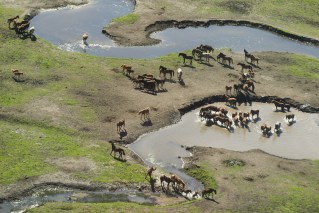The planet’s most diverse wonder, the Great Barrier Reef, should be listed in-danger as Australia fails to address climate change and other threats, a United Nations mission says.
The UN’s reactive monitoring mission has finally released its report after touring the reef in March when the Morrison government was still in power.
It says an in-danger listing is warranted, although the final word on that will rest with the World Heritage Committee when it meets next year.
The report takes Australia to task over climate change, poor water quality and fishing, and comes as scientists warn of another potential mass bleaching this summer.
Despite some progress on coral health, the report said there was an “utmost urgency” to establish more “concrete actions” to protect “the outstanding universal value” of the world’s largest reef system.
The Great Barrier Reef, which was listed as a World Heritage site in 1981, includes some 2,500 individual reefs and more than 900 islands.
No other World Heritage property contains such biodiversity — more than 1,500 species of fish, about 400 species of coral, 4,000 species of mollusk, and some 240 species of birds, plus sponges, anemones, marine worms, crustaceans, and other species.
“The GBR is of superlative natural beauty above and below the water, and provides some of the most spectacular scenery on earth,” the UNESCO website says.
“It is one of a few living structures visible from space, appearing as a complex string of reefal structures along Australia’s northeast coast.”

The reef is an unrivalled World Heritage site for its diversity. Photo: Getty
The UN mission said Australia’s management frameworks, strategies and plans to protect the reef are lacking.
Specifically, the federal government has not passed laws enshrining a target of net zero emissions by 2050.
Both federal and state government must adopt stronger emissions reduction policies consistent with stopping warming at 1.5C.
It also says management frameworks, strategies and plans have not been fully implemented, particularly in relation to water quality and fishing.
Frequent mass bleachings and increased water acidity were proving a growing threat to corals.
But not enough progress had been made on water quality improvement, largely due to the sheer scale of the challenge.
And while significant work has been done to reduce the run off of farm pollutants and sediment, efforts will have to ramp up dramatically over the next three years to achieve those water quality targets.
At the time of the mission’s visit to Australia in March, another mass coral bleaching event was playing out on the reef after its hottest December on record, further heat stress in January and then a late summer heatwave.
The Australian Institute of Marine Science later said the bleaching wasn’t as deadly for coral as other previous events and that coral cover had bounced back bounced back across two thirds of the reef.
But the institute also warned its long-term health remains at risk from climate change.

Stretching more than 2,000km, the reef can be seen from space. Photo: Getty
In a joint statement, Environment Minister Tanya Plibersek and the government’s special envoy for the reef, Nita Green, said people who live and work on the reef may find the report alarming.
But they also said the report was not a UNESCO proposal for listing the reef as in danger.
“This is a technical report and the World Heritage Centre is yet to make a recommendation, which would (then) be considered by the World Heritage Committee,” they said in a joint statement.
“We agree that climate change is a serious threat to World Heritage sites, right across the globe, including coral reefs such as the Great Barrier Reef.
“We are taking strong action on climate change by legislating an emissions reduction target of 43 per cent by 2030, with a clear path to net zero by 2050.”
The reef has recorded six mass coral bleaching events in 1998, 2002, 2016, 2017, 2020 and 2022.
Scientists say they are the result of rising ocean temperatures caused by the burning of fossil fuels.
Some coral experts fear there could be another this coming summer after data from the US government’s National Oceanic and Atmospheric Administration showed record November sea surface temperatures in the north of the reef.
-with AAP








